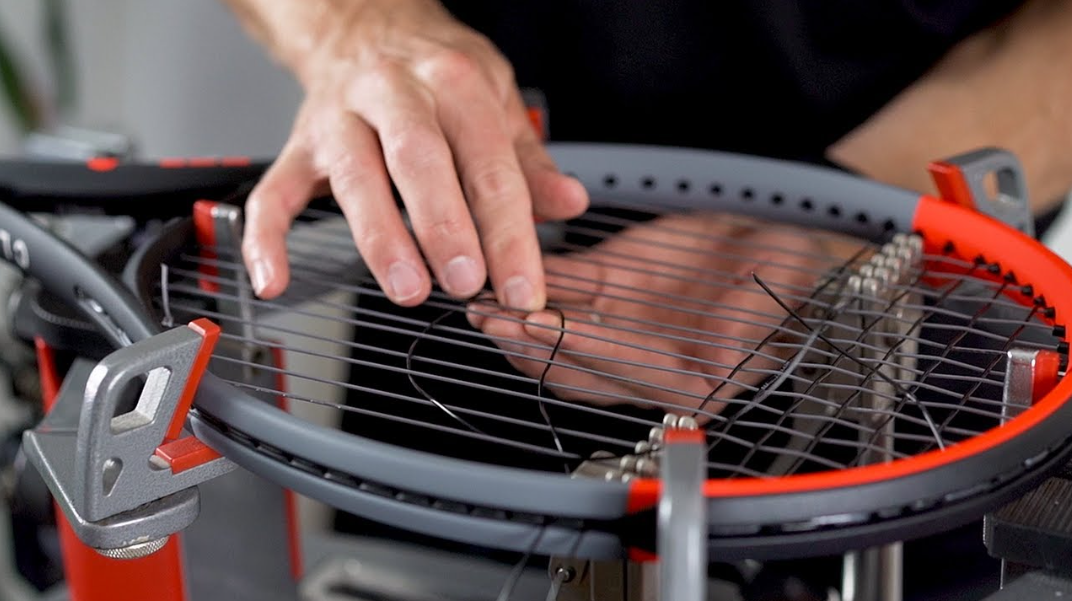When it comes to improving your tennis game, racket string tension often takes a backseat to factors like technique or footwork. However, the tension of your racket strings plays a crucial role in how you perform on the court. Whether you’re looking to add more power to your shots, increase control, or reduce arm strain, understanding racket string tension is key. In this blog, we’ll explore how string tension affects your game, helping you make informed decisions to elevate your performance.
What Is Racket String Tension?
Racket string tension refers to how tightly the strings are strung within the frame of your tennis racket. It’s measured in pounds (lbs) or kilograms (kg). Tennis rackets typically have a recommended tension range provided by manufacturers, which serves as a guide to achieving the best performance for that particular frame.
Lower tension means the strings are looser, while higher tension makes them tighter. These differences influence how the racket responds to the ball, making it crucial for players to choose the right tension for their skill level and playing style.
The Relationship Between String Tension and Power
If you’re seeking more power in your shots, lower string tension might be the way to go.
Looser strings act like a trampoline, providing a greater rebound effect when the ball hits the racket. This means the ball travels farther with less effort. Players who rely on powerful baseline shots often benefit from lower string tension. However, keep in mind that while power increases, control might decrease slightly. For beginners, lower string tension can make the game more enjoyable by requiring less force for impactful shots.
How Higher Tension Enhances Control
For players who prioritize precision over power, higher string tension is ideal.
Tighter strings provide a firmer hitting surface, reducing the trampoline effect and giving you more control over ball placement. This is particularly beneficial for advanced players who want to dictate the pace and direction of the ball. High string tension also helps when executing spin shots, as the ball stays on the strings slightly longer, allowing for better manipulation. However, it’s essential to find the right balance—too much tension can lead to arm discomfort or reduced power.
Impact of String Tension on Comfort and Injury Prevention
String tension isn’t just about performance; it also affects your comfort and risk of injury.
Lower string tension can absorb more shock when hitting the ball, reducing the stress on your arm and shoulder. This makes it a better choice for players prone to tennis elbow or those recovering from injuries. On the other hand, higher tension might cause more vibration upon impact, potentially leading to discomfort over time. Choosing the right tension based on your physical condition can prevent injuries and keep you playing longer.
Finding the Sweet Spot: What’s Right for You?
Choosing the perfect racket string tension isn’t a one-size-fits-all decision.
Your ideal tension depends on your playing style, skill level, and physical condition. Beginners might start with lower tension to focus on power and comfort, while advanced players can experiment with higher tension for better control and spin. It’s also worth consulting a professional stringer, who can customize your racket string tension to match your needs. Testing different setups is the best way to find what works for you.
String Tension and Weather Conditions
Believe it or not, weather can affect your string tension.
In hot and humid conditions, strings tend to loosen over time, while colder temperatures can make them feel tighter. This means you might need to adjust your racket string tension depending on the climate. Keeping an eye on how weather impacts your strings can help maintain consistent performance throughout the year.
When to Restring Your Racket
String tension doesn’t last forever—it changes with time and use.
As you play, strings lose tension, which can alter how your racket performs. A general rule is to restring your racket as many times a year as you play per week. For example, if you play three times a week, consider restringing three times a year. Pay attention to signs like loss of control, reduced power, or fraying strings, as these indicate it’s time for a restring.
Conclusion
Racket string tension is a critical factor in optimizing your tennis game. From influencing power and control to ensuring comfort and preventing injuries, it’s a detail that deserves attention. Experimenting with different string tensions and consulting experts can help you find the perfect balance for your style of play. So, the next time you hit the court, remember—your racket string tension might just be the key to unlocking your full potential.




